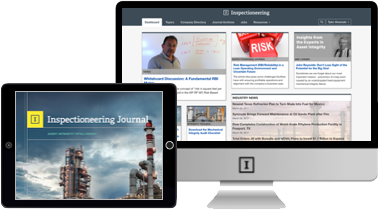Introduction
In order to utilize data most effectively, acoustic emission (AE) testing relies on a set of complementary, available investigation tools. While these tools are sophisticated, they are not as advanced as the tools available in laboratories. If one aims to realize the full power of AE testing, it is necessary to bring the capabilities of laboratory testing tools to industrial sites.
General AE Data Analysis Approach
General Issue of AE Data Processing
There are two main ways to consider acoustic emission testing data. The waveforms of the collected analog signals ("transient" signal) can be analyzed in real time. This requires significant system processing power and memory for Fourier Transform and other types of data processing. It also presents more questions and difficulty in the consistent, accurate interpretation and classification of results.
This is why in the industrial practice of acoustic emission testing of pressure vessels, we proceed by extracting physical features named "descriptors" that best represent the signals (amplitude, energy, etc.), which will be used for subsequent analysis. The goal is to link the "acoustic indications" or "acoustic signatures" of a discontinuity (set of results from the processing of parameters characterizing this discontinuity) to the source mechanisms, while filtering or separating false-positive acoustic signatures.
Global Approach to Analysis by Descriptors
The overall descriptor analysis approach applies to the "hit," which is part of the transient signal above the "acquisition threshold" (threshold value placed above the peak value of the background noise). It requires several important steps:
- The descriptors of the hits must be extracted: this is the hit characterization.
- Tools for analyzing hit populations are implemented.
- Non-significant data, such as friction signals, are eliminated via “pre-processing.”
- The analysis of the useful data files leads to acoustic signatures and interpretation.
- A qualified classification protocol can be applied.
*Note: Step 1 can be completed using software specific to the AE equipment.

















Comments and Discussion
There are no comments yet.
Add a Comment
Please log in or register to participate in comments and discussions.